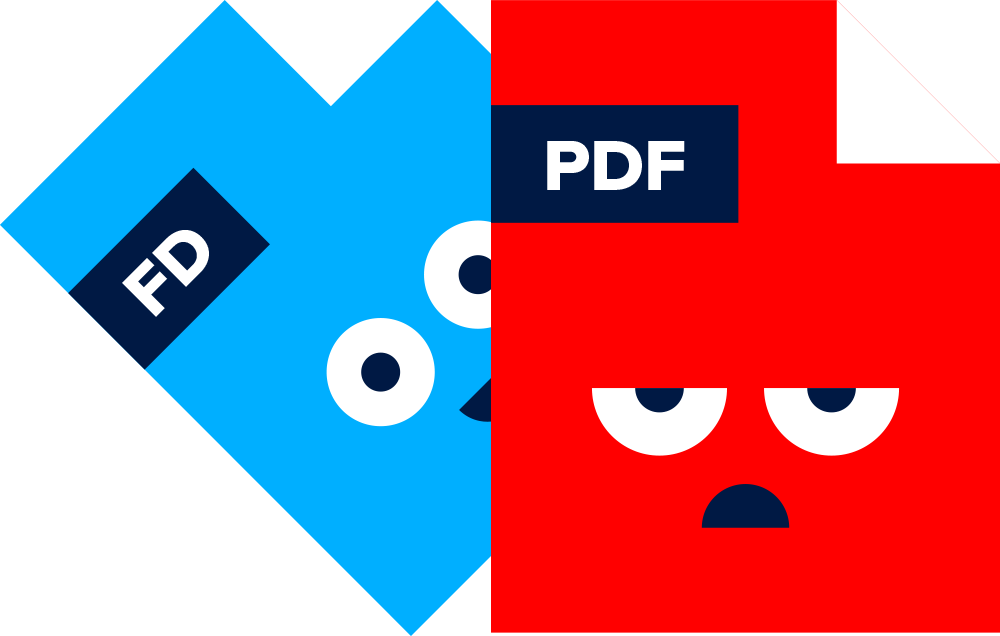When I started creating custom digital content, I could never have imagined today’s content marketing landscape. Back then, one custom publication required a whole team of designers and developers and took days to create.
Still, we were successful. Like everyone else at the time, our agency used Flash to make content interactive. Despite the enormous effort involved, we turned out some stellar work.
It’s hard to overstate how much content marketing has changed since then.
Content producers now find themselves at a point of contradiction. The old methods no longer work (Flash died with the widespread adoption of mobile devices). Responsiveness, SEO, and content ROI are what everyone wants. However, today's marketers are less willing to invest in design and development staff and have little time to spare for content creation.
Quick and cheap is a reality with which we reckon.
At the same time, engaging content is becoming more critical than ever for demand and lead generation. Content marketing is at the heart of many marketing programs for companies large and small.
Specifically, the white paper has emerged as the workhorse of digital marketing. Prospects are often eager to share their personal information in exchange for an educational white paper that helps them. Also, many B2B buyers report having read a white paper before making a buying decision — making them a useful tool for boosting sales.
Navigating the contradiction
How do you succeed in this marketing landscape where content like white papers must be produced quickly and cheaply, but must also be of sufficient quality to generate leads and boost sales?
The key to winning clicks and conversions lies in delivering content that stops your audience in their tracks. Now, more than ever, content must quickly grab attention, promptly deliver its message, and be memorable enough to outlast all the other marketing messages your readers are bombarded with each day.
To do this, you must deliver something visually stunning.
Human brains process images 60,000 times faster than text and people naturally pay more attention to words on a screen when relevant visuals accompany them. Cognitive biases also cause people to ascribe more value to things that are pretty. When asking for attention amid such stiff competition, beautiful goes a long way.
So, how do you produce visually appealing, attention-grabbing content without relying on teams of designers and developers? And more importantly, how do you do it quickly without blowing your budget?
Luckily, we live in a time where there are easy-to-use platforms for making beautiful, interactive white papers to capture leads and deepen relationships with prospects. Finding and learning to use these tools helps all marketers — not only the design-minded — to achieve the results they need.
Learning how to use these tools, and mastering a few basic tenets of design will guide you on the road to designing stunning and effective white papers:
1. Set goals and objectives
There are several fundamental questions you should answer before conceptualizing your white paper and gathering content.
What’s the goal of this white paper? It might be anything from lead generation, to customer nurturing, to sales support. Either way, having a clear goal from the beginning will keep you on track.
Along with your goal, decide on the metrics that will tell you whether or not you’ve been successful. Whether it’s traffic or the number of leads that come in, set some targets for yourself in the beginning.
A considerable advantage of using interactive white papers is that you can get data on how long people spend on each page, how far they scroll, where they click, and more. This lets you figure out exactly what interests your audience and enables you to strengthen your content continually.
2. Define your editorial approach
Next, determine your target audience and define your editorial approach. Do you have models you can hold up for the team to emulate — or avoid? Consider your style and tone of voice. They should both be consistent with your b2b branding and appropriate for the type of content you are producing.
Defining your target audience will also help you make smart decisions about distribution. After all, you won’t meet your goals if no one reads your white paper. How will you get the finished product to the appropriate audience? If you don’t have a mechanism to do that, this is something to focus on before you move on to content creation.
The great thing about interactive white papers is that they're so easy to distribute. Unlike PDFs which can only be downloaded or emailed, their interactive counterparts reside on a particular URL and have social sharing built-in. Integrating analytics lets you keep track of where visitors come from and focus on the channels that produce results.
3. Consider design from the beginning
Layout and design should be on your mind from the moment you start outlining your white paper copy — they go hand-in-hand.
Perhaps a metaphor in your introduction will inspire a memorable visual theme, or a decision to build your white paper around five big ideas will dictate the layout and typography.
These are the kinds of choices you can make before copywriting begins, and you can continue to refine them throughout the drafting process.
Remember, great design cannot compensate for poor content. Instead, the look and feel of your white paper should amplify the meaning of its words. Together, copy and design should create a cohesive piece that retains the reader's attention and remains memorable long after they’ve read it.
Interactive white papers provide many new and exciting design options for making your content come to life. Full-screen background videos and animated transitions, for example, are the kinds of visuals that will make your message stick.
4. Engage readers with personalization and multimedia
Interactive white papers allow you to gather information with lead forms and connected social profiles. You can then use this info to personalize your white papers to each specific reader. Including information about your reader creates a sense of connectedness and makes the reading experience more conversational.
Not only can you address your white paper readers by name, but you can highlight different sections of your content based on their industry, role, or other available data. Solidify that personal connection through photography, graphics or video explicitly created for the white paper.
5. Go easy on your reader’s eyes
Break up text-heavy pages, use plenty of whitespaces, and go easy on the reader’s eyes. Your font size should be 16pt or larger. I prefer 20 for easy reading on a screen. You can also use images like charts and graphs to both strengthen your points and break your text up further.
6. Analyze, learn, adjust, and repeat
The beauty of interactive white papers (as opposed to PDFs) is the opportunity to analyze how readers interact with your content.
People typically read between 250 and 400 words per minute on a screen. Use this as a benchmark and check the time readers spend on each of your pages. Are they reading or skimming? Which links do they open most? If the highest conversion point is at the end of your white paper, for example, maybe you can boost results by repositioning it to a previous page.
These insights will help you to improve your white paper over time and provide you with valuable insights for future content.
Conclusion
The internet is barreling towards an age of content overload. That means if your white paper doesn't stand out, it's likely to miss out. Stunning visuals, personalization, and interactive design elements ensure your content gets the attention it deserves.



